Surprising Stories: Albert Kahn and his Gardens
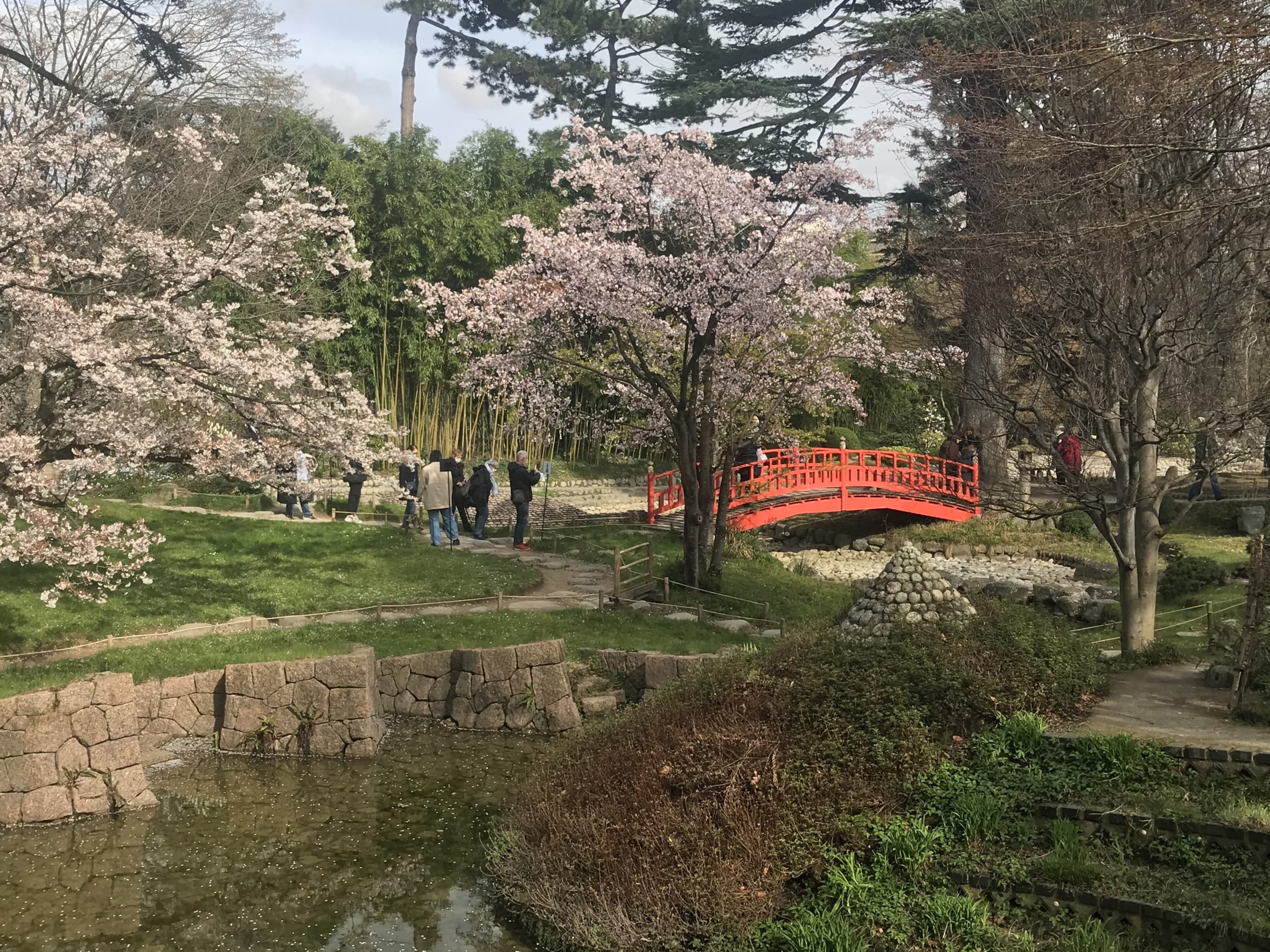
Although his name is not familiar to many today, Albert Kahn was the Bill Gates of early 20th century France; a financial wizard who speculated in international finance, he dedicated his fortune to philanthropy. Kahn inaugurated two exceptional projects, a photographic collection called the Archives of the Planet and his private estate where he designed the Gardens of the World, two legacies that survive today at the Musée Albert Kahn in Paris.
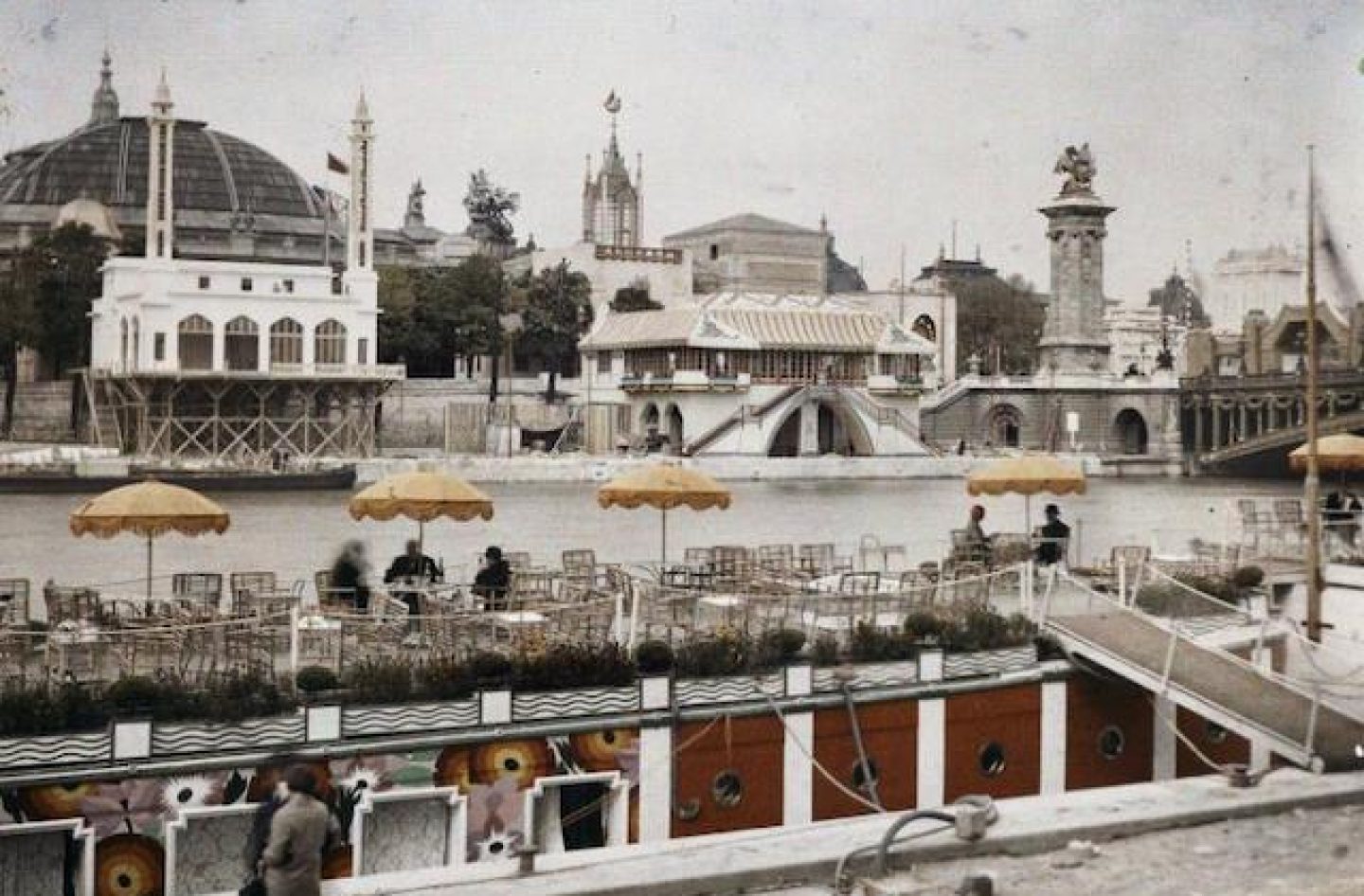
Paris during the 1900 World’s Fair, Autochromes, Albert Kahn
Gardens of the World
Born in 1860, descended from a prosperous Jewish family in Alsace, he emigrated to Paris in 1879. Perhaps inspired by the gardens at the two Universal exhibitions, in 1889 and 1900, Kahn recognized that gardens appealed to all cultures and could promote cross-cultural understanding and peaceful co-existence. In 1895, he bought a hôtel particulier at 6 quai de Quatre Septembre in Boulogne-Billancourt and over the next thirty years Kahn bought up parcels of land to create his own garden. Kahn planned a ‘garden à scenes,’ four interconnected areas that would reveal great periods of garden history and reference his youth in Alsace.
Kahn, a dedicated horticulturalist himself, hired Louis Picart (1863-1930), as his head gardener. A trained nurseryman, he worked at both the Universal Exhibitions of 1889 and 1900.Kahn invested at least 140 million francs in his garden. Kahn wanted his visitors to move seamlessly from what was then considered the best examples of garden design: French, English, and Japanese style gardens.
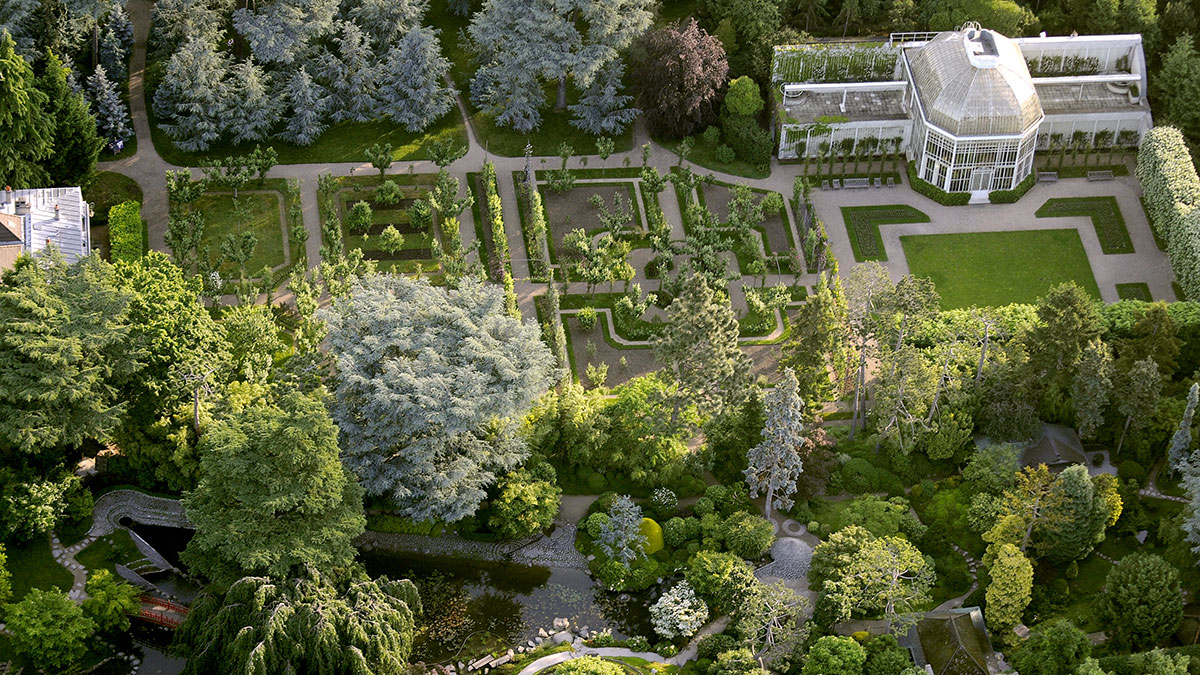
Arial view of the French Garden, Jardins Albert Kahn. Photo: Musée Albert Kahn
The French Garden
Kahn commissioned father and son landscape architects, Henri (1841-1902) and Achille Duchene (1866-1947), who championed the revival of the French formal gardens, to build a palm house surrounded by a rose and fruit garden. This garden highlights espalier techniques for growing pears, apples and roses referencing the horticultural prowess that lies at the heart of the French formal style.

Musée departemental Albert Kahn, Photo: Paris Info
The English Garden
This was built around a pond and bridge in concrete made to resemble a rocky grotto. A cottage overlooks a grassy lawn. Kahn planted redwoods, ginkos and tulip trees to evoke the horticultural diversity pioneered by the English in the eighteenth century.
The Japanese Garden
Kahn hired the Japanese gardener Wasuke Hata (1865-1928), who created the Japanese garden for the Universal exhibition of 1889, to oversee his Japanese garden. Following one of this trips to Japan, Kahn brought back two authentic tea houses to his home. Hata planted Japanese trees and bonsai and worked on the garden until his death. The original garden was partially replaced by Fumiaki Takano in 1990. Takano built two wooden bridges, a grouping of azaleas, and redesigned of the landscape arranged to honor Kahn. He arranged stones as cones to mark Kahn’s birth, a river that flows as a metaphor of his life, and a spiral that indicates his ongoing legacy.

Vosgien forest
The Vosgien Forest and Blue Forest
These forests were planted with pine and spruce trees that Kahn imported recalling his youth and attachment to Alsace. He commandeered a private train to import over 250 mature trees and blue granite rocks that required over 6 months of work and 50 workers to install. The Blue forest is planted with Atlas cedars.
Despite his spectacular success as banker, the stock market crash of 1929 precipitated Kahn into bankruptcy. From 1932 until 1941, he continued to live on his estate; the gardens were saved from destruction when they were purchased by the Hauts de Seine administrative region. Kahn’s secular patriotism and optimistic vision for world peace were dashed in 1940 with the Nazi invasion of France, but his unique legacy still flourishes. The gardens have been restored, the photographic archives made available on line, and a new museum building that is scheduled to reopen this year.
An exhibition of his autochromes, Paris 1910-1937: Promenades through the Albert Kahn Collections, is currently on display at the Cité d’Architecture through July 5th, 2021. We can arrange a private tour of this exhibit followed by a tour of his exceptional gardens or a visit of the gardens as a separate tour. Contact us here for more information.

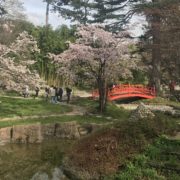
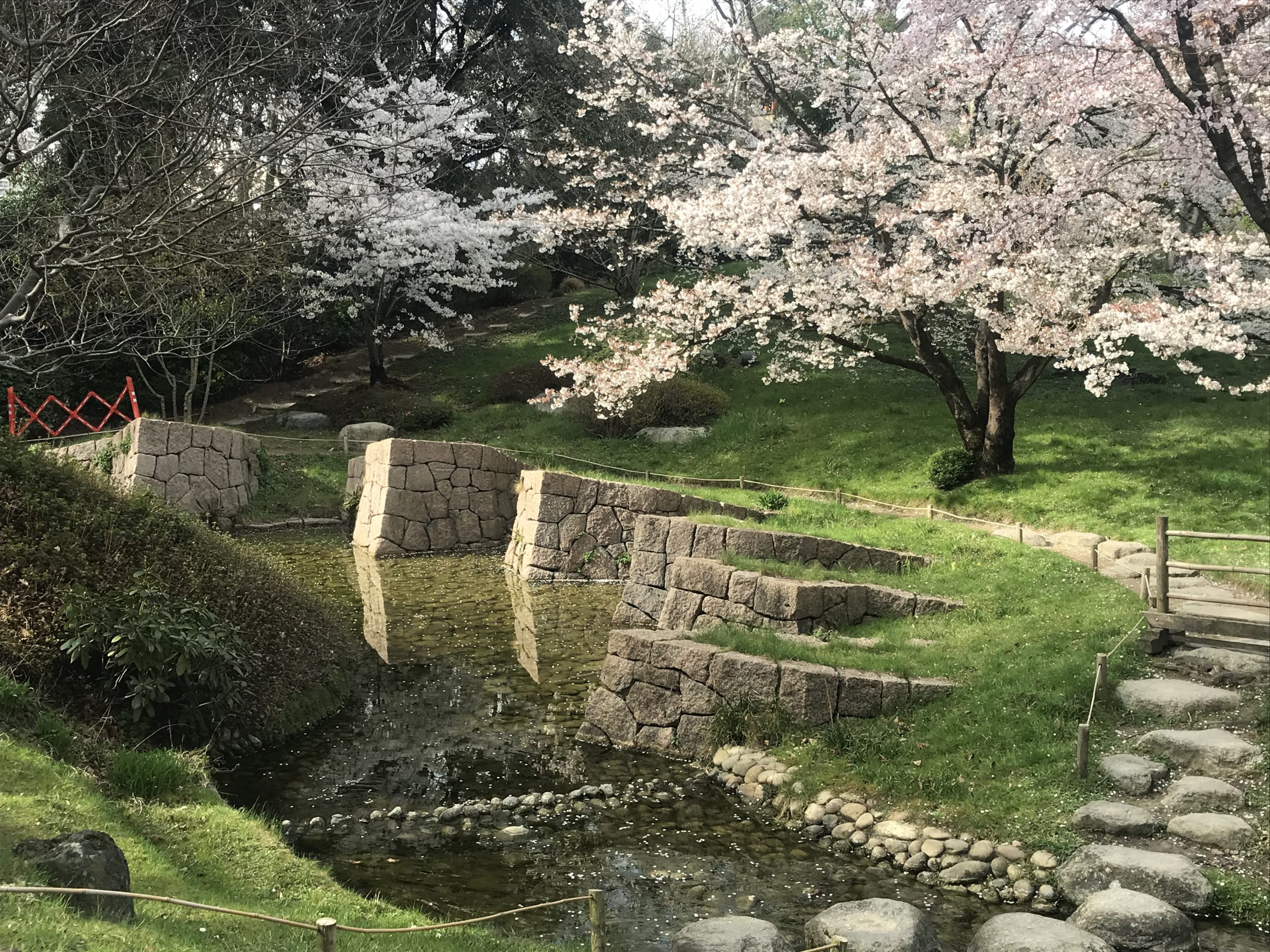


Leave a Reply
Want to join the discussion?Feel free to contribute!